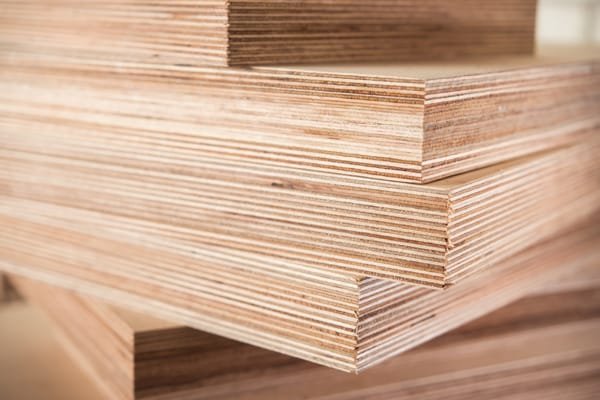Application, details and differences of MR, BWR and BWP plywood
Plywood is a wooden board consisting of two or more layers glued and pressed together with the direction of the grain alternating.
It is strong, durable, stable and generally lighter compared to solid wood.
The 3 main types available for interior furniture work depending on their water resistant properties are
- Moisture Resistant (MR) ply, also known popularly as Commercial ply
- Boiling Water Resistant (BWR)
- Boiling Water Proof (BWP), also known as Marine ply
Moisture Resistant (Commercial) Ply
MR is suitable for interior furniture work where the furniture won’t come in contact with water. You may use it for your home and office furniture in all areas except wet zones like kitchen and toilet.
It uses urea-formaldehyde resin for bonding the plies.
In India, look for the IS 303 mark on the ply sheet.
Boiling Water Resistant Ply
BWR is superior to MR in strength, durability and is termite and borer proof.
While not waterproof, it is much more moisture resistant than MR ply and can be used in kitchens too. For bathrooms though, you should use BWP.
It uses Phenol formaldehyde resin for bonding the plies. And it is treated with chemicals to make it termite and borer proof.
In India, look for the IS 303 mark on the ply sheet.
Boiling Water Proof Ply
BWP, also known as marine and gurjan ply, is the best in terms of durability, strength, water resistance, nail holding capability and density amongst the 3 types.
BWP is a must in toilets. And, if you have the budget, you may use it for your indoor furniture too.
It is manufactured using a single species of tropical hardwood. The ply is glued using boiling waterproof synthetic undiluted phenol-formaldehyde adhesive. It is treated with chemicals to make it termite and borer proof too.
The pasting of ply is of top quality. It ensures that no gaps are left between cores. This and the ply quality makes it denser making the furniture stronger but heavier.
In India, look for the IS 710 mark on the ply sheet.
Pricing
BWP is the most expensive while MR is the cheapest. For a ballpark figure, BWP costs about 35% higher than MR and 20% higher than BWR.
Hence, for office furniture, MR ply of a reputed company is recommended. For homes with a small budget, a combination of MR and BWR/BWP ply is used. And BWP is used where durability and strength is important and the additional cost is budgeted for.
Ply quality checklist
How to find out if the ply you are buying is of good quality
- The ply face is smooth, without undulations and is not bent
- All the plywood sheets are of uniform thickness and the thickness is as claimed
- The weight is as per the specifications. More the weight, generally better the ply.
- The gluing is of good quality if the core layers are in straight line and there are minimum voids
- You can ask your carpenter to check the ply quality by driving a nail through the sheet to check nail holding capability and to test if the ply splits. Cutting through a sheet may also help gauge the density of the ply.
Word of advice
Commercial plywood is stamped and re-coloured to sell as BWP (marine) plywood. Even the brand name is faked. So, always purchase from a reputed dealer and ask for a test certificate.



